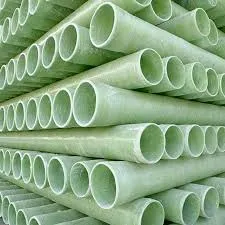
-
 Afrikaans
Afrikaans -
 Albanian
Albanian -
 Amharic
Amharic -
 Arabic
Arabic -
 Armenian
Armenian -
 Azerbaijani
Azerbaijani -
 Basque
Basque -
 Belarusian
Belarusian -
 Bengali
Bengali -
 Bosnian
Bosnian -
 Bulgarian
Bulgarian -
 Catalan
Catalan -
 Cebuano
Cebuano -
 China
China -
 China (Taiwan)
China (Taiwan) -
 Corsican
Corsican -
 Croatian
Croatian -
 Czech
Czech -
 Danish
Danish -
 Dutch
Dutch -
 English
English -
 Esperanto
Esperanto -
 Estonian
Estonian -
 Finnish
Finnish -
 French
French -
 Frisian
Frisian -
 Galician
Galician -
 Georgian
Georgian -
 German
German -
 Greek
Greek -
 Gujarati
Gujarati -
 Haitian Creole
Haitian Creole -
 hausa
hausa -
 hawaiian
hawaiian -
 Hebrew
Hebrew -
 Hindi
Hindi -
 Miao
Miao -
 Hungarian
Hungarian -
 Icelandic
Icelandic -
 igbo
igbo -
 Indonesian
Indonesian -
 irish
irish -
 Italian
Italian -
 Japanese
Japanese -
 Javanese
Javanese -
 Kannada
Kannada -
 kazakh
kazakh -
 Khmer
Khmer -
 Rwandese
Rwandese -
 Korean
Korean -
 Kurdish
Kurdish -
 Kyrgyz
Kyrgyz -
 Lao
Lao -
 Latin
Latin -
 Latvian
Latvian -
 Lithuanian
Lithuanian -
 Luxembourgish
Luxembourgish -
 Macedonian
Macedonian -
 Malgashi
Malgashi -
 Malay
Malay -
 Malayalam
Malayalam -
 Maltese
Maltese -
 Maori
Maori -
 Marathi
Marathi -
 Mongolian
Mongolian -
 Myanmar
Myanmar -
 Nepali
Nepali -
 Norwegian
Norwegian -
 Norwegian
Norwegian -
 Occitan
Occitan -
 Pashto
Pashto -
 Persian
Persian -
 Polish
Polish -
 Portuguese
Portuguese -
 Punjabi
Punjabi -
 Romanian
Romanian -
 Russian
Russian -
 Samoan
Samoan -
 Scottish Gaelic
Scottish Gaelic -
 Serbian
Serbian -
 Sesotho
Sesotho -
 Shona
Shona -
 Sindhi
Sindhi -
 Sinhala
Sinhala -
 Slovak
Slovak -
 Slovenian
Slovenian -
 Somali
Somali -
 Spanish
Spanish -
 Sundanese
Sundanese -
 Swahili
Swahili -
 Swedish
Swedish -
 Tagalog
Tagalog -
 Tajik
Tajik -
 Tamil
Tamil -
 Tatar
Tatar -
 Telugu
Telugu -
 Thai
Thai -
 Turkish
Turkish -
 Turkmen
Turkmen -
 Ukrainian
Ukrainian -
 Urdu
Urdu -
 Uighur
Uighur -
 Uzbek
Uzbek -
 Vietnamese
Vietnamese -
 Welsh
Welsh -
 Bantu
Bantu -
 Yiddish
Yiddish -
 Yoruba
Yoruba -
 Zulu
Zulu
frp pipes and fittings
Understanding FRP Pipes and Fittings Advantages and Applications
Fiber Reinforced Plastic (FRP) pipes and fittings are innovative materials that combine the durability and strength of traditional piping solutions with the lightweight and corrosion-resistant properties of plastics. As industries continuously seek materials that offer enhanced performance and lower maintenance costs, FRP pipes and fittings are becoming increasingly popular across various sectors.
What are FRP Pipes and Fittings?
FRP pipes are composed of a polymer matrix reinforced with fibers, typically glass (glass fiber reinforced plastics) or carbon. This composite material boasts exceptional properties, such as high tensile strength, chemical resistance, and low specific gravity. The fittings, including elbows, tees, flanges, and couplings, are manufactured from the same robust materials, ensuring uniformity in performance across the piping system.
Key Advantages of FRP Pipes and Fittings
1. Corrosion Resistance Traditional metal pipes can corrode when exposed to chemicals, moisture, or saline environments. FRP pipes and fittings, on the other hand, are resistant to a wide range of corrosive chemicals, making them ideal for industries such as chemical processing, wastewater management, and marine applications.
2. Lightweight and Easy to Handle One of the standout features of FRP materials is their lightweight nature. This characteristic reduces transportation and installation costs, as less labor is required. Workers can handle FRP pipes easily, requiring fewer lifting equipment and lowering overall logistical challenges.
3. High Strength-to-Weight Ratio Despite being lightweight, FRP pipes and fittings provide a high strength-to-weight ratio. This feature allows for efficient design and integration into existing infrastructures, reducing the need for extensive modifications.
4. Low Thermal Conductivity FRP materials have low thermal conductivity, which is beneficial in preventing temperature changes in the transported fluids. This quality makes them suitable for hot or cold water applications, minimizing thermal loss.
5. Cost-Effectiveness While the initial investment in FRP piping systems may be higher than traditional materials, the long-term savings on maintenance and replacement costs are substantial. Their durability and resistance to wear and tear mean they can outlast other materials under similar conditions.
frp pipes and fittings

Applications of FRP Pipes and Fittings
FRP pipes and fittings find applications across a range of industries
- Chemical Industry Due to their chemical resistance, FRP pipes transport aggressive chemicals, acids, and other hazardous substances. Their inert nature ensures that the integrity of the fluids is maintained.
- Water and Wastewater Management Municipal water treatment plants utilize FRP piping systems for both potable water and wastewater treatment processes. Their resistance to corrosion ensures a prolonged lifespan in harsh environments.
- Oil and Gas In oil refineries and gas processing facilities, FRP pipes are increasingly used for transporting hydrocarbons and other chemicals safely, reducing the risk of leaks and spills.
- Marine Applications The marine industry benefits from FRP's resistance to saltwater and marine organisms. They are used in installations such as docks and seawalls, where traditional materials may fail prematurely.
- Fire Protection Systems FRP pipes and fittings are also employed in fire protection systems due to their ability to withstand high temperatures and not support combustion.
Conclusion
In summary, FRP pipes and fittings are revolutionizing the way industries approach fluid transport. Their unique combination of strength, lightweight design, corrosion resistance, and cost-effectiveness makes them a preferred choice in modern infrastructure. As the demand for reliable and efficient materials continues to grow, FRP technology is likely to expand further, revealing new applications and enhancing existing systems. Whether in challenging chemical environments or demanding construction projects, FRP pipes and fittings are positioned to meet the future's needs, providing robust solutions for a variety of challenges.









